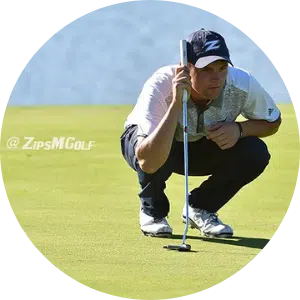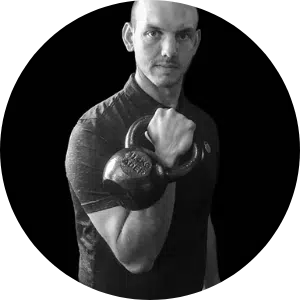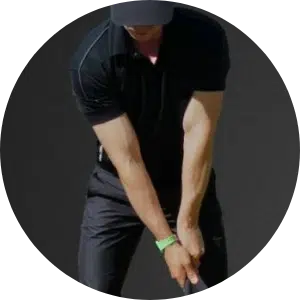GOLF TIPS
FROM SEASONED PROFESSIONALS
& EXPERIENCED GOLFERS
ENTER YOUR EMAIL BELOW AND WE’LL SEND YOU A DIGITAL COPY
ENTER YOUR EMAIL BELOW AND WE’LL SEND YOU A DIGITAL COPY
As a seasoned golfer, I get questions all the time from beginners to more advanced players asking how they can improve their game. Unfortunately it’s not a one-size-fits-all answer.
So, rather than have the advice of just one person (me), we’ve teamed up with some very experienced golfers and coaches to bring you real, actionable golf tips that you can apply today and improve your game.

– Nick Lomas

At the end of the day, don’t take your game too seriously. Golf is so much more than what your scorecard says - it’s about being out in nature; it’s about camaraderie; and it’s about having fun. Your score should always be secondary to actually getting out and playing.

Here's a chipping tip. For me most golfers can lower their scores by becoming proficient around the greens. I'm talking about the basic chip and run shots from anywhere inside 30-feet. For me it all starts with a good chipping set up. Set up with a narrow stance with only about a clubhead distance between your feet. The shoulders need to be very level and almost feel like you're tilting them slightly down with the lead shoulder towards the target. This helps improve the angle of attack so you don't try to scoop or lift the ball into the air and chunk or thin it. Finally, keep about 60-70% of your weight on the lead side promoting a slightly descending angle of attack and you'll make consistent contact every time.

My tip would be straight from legendary golf teacher Harvey Penick. "The short game. Those are the magic words," Penick said in Harvey Penick's Little Red Book: Lessons and Teachings from a Lifetime in Golf. "The higher your score, the faster you can lower it—with the short game." About half of strokes come within 75 yards of the hole. Penick urged golfers to spend 90 percent of their practice time on chipping and putting. Give it two weeks. Expect rapid improvement.

Hey, I’m no Bryson DeChambeau. I use my brains not biceps on the course, though I don’t pack much of a punch in either department. I digress. A couple of years ago I eavesdropped while my teenage daughter was receiving a lesson from her instructor. When hitting driver, he told her to bring the clubhead back low and slow and keep it along the grass line as long as possible. The result is you end up using your larger muscles to start the swing and it keeps you from snatching the club back or picking it up too quickly. Though I still hit a pool screen occasionally, this tip has helped my consistency off the tee and enabled me to really slow the entire process down.” – The Golf Travel Guru

First, I tell everyone to get help from a golf professional. For every self-taught Bubba Watson or Seve Ballesteros, there are thousands of us hacks that will never truly improve without the right information and assistance. Second, find one or two drills that you can rely on to help fix your biggest or most common issues, so that you can learn to self-correct your swing. For me, it's always swing path and tempo issues. So, my best drill is putting a ball a few inches from the wooden divider at the range and work up to hitting the ball with a full swing hitting the wood. It was jarring the first few times I did it, but it gets the job done, and it creates a visual and a feeling that I can take to the course with me. Finally, take dead aim! The marksmanship theory of aim small, miss small applies to golf every bit as much as shooting. When picking a target, be as specific as your eyesight allows.

If you’re a seasoned veteran or someone that’s new to the game, these keys will help you hit the ball with more authority: Allow the lead heel to get up off the ground in the backswing and free up the lower body. Get your belt buckle pointing away from the target as much as you physically can in the backswing. Feel the lead shoulder stretch away from the target so that you can really feel the tension and torque in your body as you wind up. I would encourage everybody to start doing this at home with out a club and in front of a mirror. You most likely know what it should look like, but we all need to get a feel for the right look. A mirror will help! From my own experience in working to incorporate these elements into my golf swing it will take some time as you get more comfortable with the bigger pivot, but the gains far outweigh the discomfort. - Stay patient and never give up trying to get better!

The best golf tip I have ever received was maybe not even a tip, but an insult. I was sitting at a college golf dinner prior to a tournament, and Jason Dufner came to speak to us. He told some funny stories and we had a good time, but the one thing he said to the room full of D1 college golfers was... “Your short games suck. That’s the difference between you and the pros”. Although this wasn’t exactly a “tip”, it was the first time I fully understood why so many golf coaches tell young golfers to practice their short games. From that dinner forward, I worked hard on my short game and gained a ton of confidence in my game overall! So if I had one tip that I am certain will benefit ALL golfers, it is to allocate at least 50% of your practice time to shots 50 yards and in (including putting).

When looking to include a golf related element to your workout routine, try to include movements that take you through all three planes of movement. The golf swing is a very complex movement that challenges athletes in all planes of movement. The saggital plane divides the body in half vertically, into right and left sections. Some common movements in this plane include: front step ups, tricep pushdowns, vertical jumps, and forward lunges. The frontal plane divides the body into front and back sections and movements in this plane include: side bends, side lunges and lateral raises. Lastly and usually the most neglected plane of movement is the transverse plane. The transverse plane divides the body into top and bottom sections and includes all rotational exercises. A few examples of exercises in the transverse plane are: Russian twists, throwing, and swinging the club. To really to take your golf game and fitness to a new level, doing exercises that involve more than one plane of motion(i.e. Front Lunge w/Torso Twist)will really prepare you for the demands of the game. If you are serious about taking your game to new levels, I would recommend getting assessed by a qualified golf fitness professional to determine what areas are holding you back and have a program put into place to address those areas specifically.

I think there are so many valuable lessons to learn in golf, but I see this lesson as one of the first lessons that all budding golfers should absorb and apply: Yard by Yard is Too Hard – Inch by Inch is a Cinch In recent times, the BIG IDEA has been claimed to be that DISTANCE is the Answer to becoming a great (or better golfer) and this is the BIG LIE! In recent times Dustin Johnson is the #1 Player in the World and it is claimed that his long driving and power is what separates him from his competitors – His length is a factor but WHY he is winning and #1 is due to his increased accuracy with the wedges. You see when he concentrates on his wedge play and “dialing-in the distance” of these “Less than Full Shots” his precision of contact improves and this flows on to his long shots and his Driver. His Putting is also a major focus in his training and this goes hand in glove with his training of the Wedge Play and Pitching and Bunker Play Whether you are Super Senior Champion from the Champions Tour or just starting out to become a competent golfer, the best way to build accurate shots and control of your technique is to start close to the hole and work back in baby steps.

One of the most important and most underrated parts of a player’s technique is face-strike quality. If you miss the sweet spot by even a few mm, it will cost you distance and accuracy - yet very few people work on this skill directly. In order to check your strike (and this is a great drill in itself), get a can of Dr Scholls footspray (the white powder version, not the clear one) and spray the clubface. Now hit shots and you will be able to immediately see where you have struck on the face.
Enter your email below to join the Golf Span Newsletter